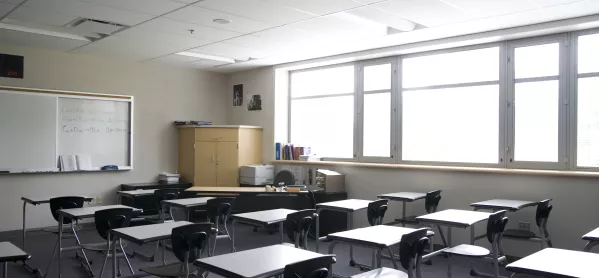Almost twice as many Year 11 pupils were persistently absent between the start of the academic year and the Easter holidays, when compared to the last group of students who sat exams in 2019, new data shows.
The figures, compiled by the FFT Education Datalab, also reveal that over half (51 per cent) of disadvantaged Year 11 students had an absence rate of at least 10 per cent over the current academic year up to the end of the spring term, compared to under a third (30.9 per cent) in 2018-19.
And GCSE exam students recorded the highest level of persistent absence compared to other secondary year groups, the FFT attendance tracker data shows.
Year 11s had the highest absence rates across all thresholds, with 15 per cent missing at least 20 per cent of school sessions, compared to 4 per cent of Year 7s, according to the FFT data.
It shows the rate was much higher among disadvantaged students, with over a quarter (27.1 per cent) having a 20 per cent absence rate - the equivalent of almost a day a week - compared to just 11.1 per cent of other students.
And almost one in ten (9.9 per cent) of disadvantaged pupils missed more school than they attended, compared with 3.7 per cent of their peers.
Absence as exams loom
The FFT says its data shows a much bigger proportion of disadvantaged pupils have missed a lot of school since the Easter holidays, with around one in eight disadvantaged pupils missing more school than they’ve attended, compared with around one in 20 of their peers.
Commenting on the findings, the report authors Dave Thomson and Katie Beyon said: “Absence has been high for Year 11s all year, and not much has changed in the past few weeks.
“Those who missed lots of the exam build-up period tended to have also missed lots of school before Easter, and those who were mostly present tended to have been mostly present before Easter too.
“For most pupils taking part in this year’s GCSEs, the last ‘normal’ year they experienced was Year 8. Of course, we’re all anxiously waiting to see the impact of disruption on grades. But, for many pupils, completing a set of GCSE exams against such an extraordinary backdrop is a success in and of itself.”
In January, Tes exclusively revealed data from the FFT that found disadvantaged pupils sitting exams this summer had missed an average of eight weeks of school since they started Year 10 in autumn 2020.
The figures were in addition to the two months pupils were learning remotely when schools were closed in early 2021.




